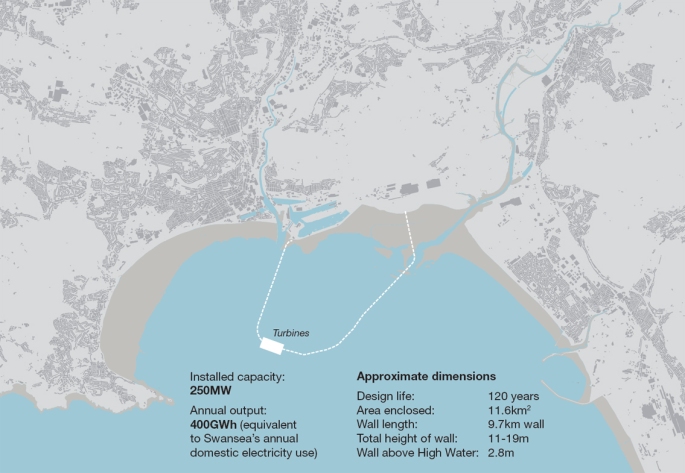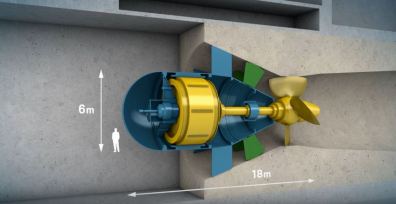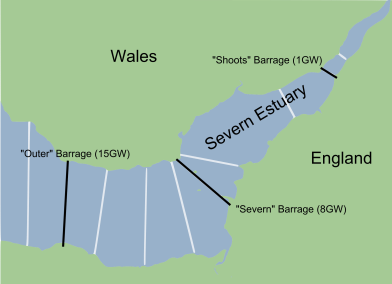In early January of this year it was announced that the construction of a 11.6km2 tidal lagoon in Swansea Bay, Wales had made it through the planning stage [1]. There was a very high level of acceptance for the project, with large amounts of support coming from the locals and the government, what with it being the first of its kind [2]. This project seems too good to be true, but is this really the solution to getting Britain to meet its targets that have just come out of the Paris agreement in 2016 [3] or is this going to be another case of the failed Severn Barrage? [4]

The proposed lagoon is going to be created by sucking up gravel and sand from Swansea bay and pumping it into high strength cylinders which are then stacked and covered in rocks. The seawater enters and leaves the lagoon through the turbine housing as seen in Figure 2 and, using a series of gates allows the plant to generate electricity 4 times a day.

I won’t go into technical details as there is a video here that covers all the aspects of the plant it a very detailed way. My big concern with this is why is it the first of its kind in the world, when all the statistics point towards it being the best renewable energy source [5]? Well, we are fortunate to have the 2nd largest tidal range in the Bristol channel with that of Swansea Bay being 7-9 meters, [2] meaning the plant would actually be cost effective. It would have an estimated life of 120 years [2], which at the end of that (unlike a nuclear reactor) parts could be replaced and the lifetime extended. The cost of the power it produces is also fairly low, with an estimated cost of £96.50 per MWh [6] compared to £92.50 per MWh for nuclear at nearby proposed Hinkley point C [7]. This cost is slightly higher than nuclear, but it was announced on the 1st of February that the government would subsidise this (seeing as its renewable as opposed to nuclear) [8]. The initial subsidy was £160 per MW over 35 years, but it’s now just under £100 per MW over 90 years [9]. Most people would see this as a cut, and that is essentially what it is, but it means the plant will be producing subsidised power for 75% of its life as opposed to 30%. Whilst the energy will not be as cheap in the short term, over the course of its life it will be much more cost effective.

Going back to the Severn Barrage (in Figure 3), which was a proposed £30 billion tidal power plant stretching from Weston Super-Mare to Cardiff that would have provided 5% of all the UK’s electricity [4]. This project was scrapped in 2010 due to the ecological impacts on the wetlands around the Bristol channel [4]. The designers behind the Swansea Bay plant however, have located this lagoon in a way that neither the River Neath or Tawe flow into it. There are also plans to implement conservation schemes, including a lobster hatchery in the lagoon, but personally I cannot see these lasting. Overall, this development has huge potential, plus if it works, there are several other potential sites all located within the Bristol channel [1].
